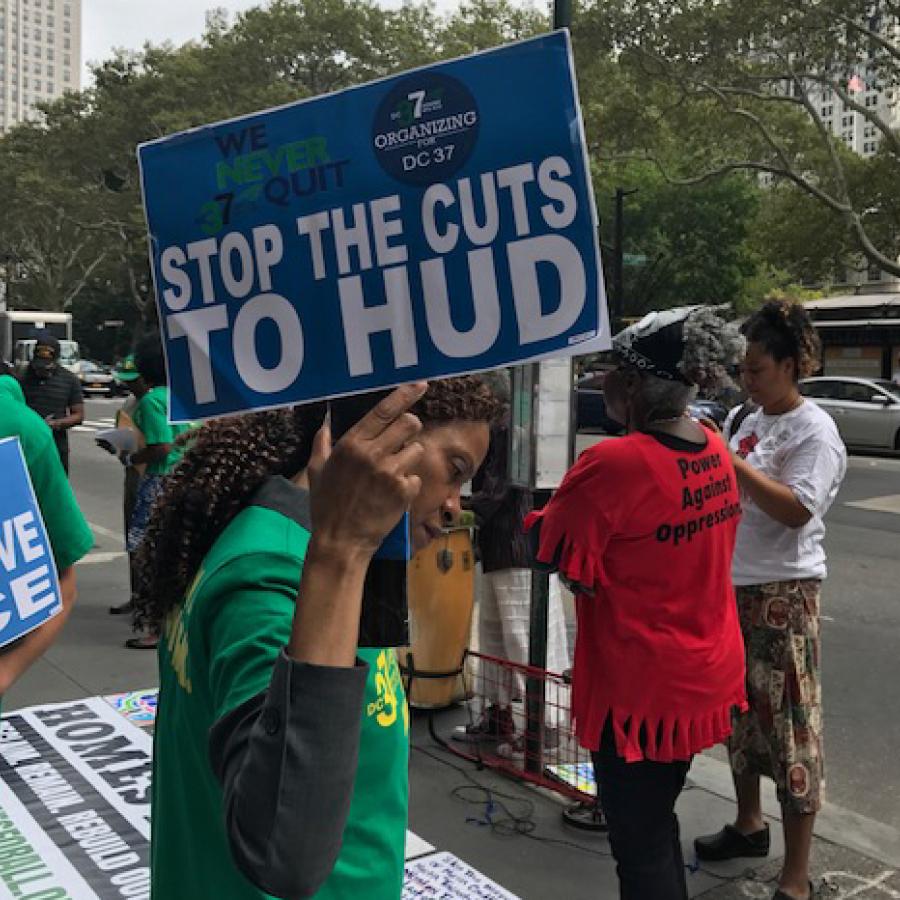Housing burden: All residents should have access to quality, affordable homes.
Insights & Analyses
- Since 2000, the share of renters who are rent burdened has increased from 40 percent to 50 percent in 2022. The share of renters who are severely burdened increased from 1 in 5 to 1 in 4.
- At least half of renters are currently rent burdened in 68 of the 100 largest cities in the US.
- Black and Latinx women renters are most likely to be rent burdened among all other race and gender groups identified by the census.
- Florida, Hawaii, and Louisiana have the highest shares of rent-burdened renters while North Dakota, South Dakota, and Nebraska have the lowest.
- Because rent burdens are a function of costs and income, some high-cost cities that have experienced gentrification (like San Francisco) have a relatively lower share of rent-burdened residents and some lower-cost cities with large low-income populations (like Stockton) have high shares of rent-burdened residents.
- The share of homeowners who are cost-burdened has declined since 2010 (from 30 to 22 percent), partly because the foreclosure crisis turned many homeowners into renters. Black and Latinx homeowners are still the most likely to be cost-burdened of all racial and ethnic groups identified by the census.
Drivers of Inequity
For decades, the United States has experienced a housing affordability crisis that has forced a large number of renters and homeowners alike to spend a sizable share of their income on housing. The Great Recession of the late 2000s and early 2010s worsened this crisis, as millions of Americans lost their homes due to foreclosure, including a disproportionate share of households of color. Since the recession, home construction has failed to keep pace with population growth and market demand, leading to a housing shortage of several million units, especially affordable homes. Consequently, rents and home prices have surged across the country in recent years. Corporate investors have purchased an increasing number of homes, further restricting the homebuyers market and the availability of below market-rate rental units. High rental costs and high home prices restrict upward mobility by making it harder for families to remain in their rental units and save towards a home, including many households of color historically restricted from homeownership due to exclusionary housing policies and lending practices.
Strategies
Grow an equitable economy: Policies to ensure affordable housing for all
- Raise public funds to increase the supply of affordable homes through housing trust funds and housing bonds.
- Invest in nonmarket approaches to affordable housing development, like community land trusts and mixed-income social housing.
- Require or incentivize the inclusion of affordable housing within new developments using inclusionary zoning, community benefits agreements, density bonuses, or other tools.
- Empower community-based developers and nonprofits to preserve affordable rental housing, particularly apartments located near job centers, public transit, and services, through Community Opportunity to Purchase (COPA) policies and gap funding for property acquisitions.
- Make data on the ownership and management of housing accessible through public rental registries.
- Promote shared equity homeownership models, such as Tenant Opportunity to Purchase policies (TOPA) and limited equity cooperatives.
- Increase public and private investments in home construction that diversify the housing supply and offer affordable homebuyer opportunities, both of which support first-time buyers in finding entry homes.
- At the state and local level, ensure strong tenant protections to prevent displacement, such as just cause eviction ordinances, anti-harassment policies, low-cost or free legal assistance, and rent control.
- At the state level, ratify constitutional amendments that recognize housing as a human right.
- At the federal level, create a rental subsidy program for rent-burdened tenants, implement a renters' tax credit to help reduce rents for low-income families, enforce and expand the Fair Housing Act to ensure fair housing, expand the national Housing Trust Fund to increase investment in affordable housing production, and enact a homes guarantee for all people in the United States to have safe, affordable, accessible housing.
Strategy in Action
Affordability is secured for generations in Boston's South Dorchester community. For over 40 years, Boston's Codman Square Neighborhood Development Corporation (CSNDC) has been working to build a stronger South Dorchester community area through affordable housing and commercial development, economic inclusion, transit equity, and deep resident engagement. For much of the 20th century, Dorchester was home to many working-class European immigrants and Black Americans who were restricted from buying or renting homes in Boston’s all-Anglo neighborhoods. Many of the neighborhood’s current residents – including more recent immigrants from Africa, Asia, and Latin America – still struggle with income disparity and housing unaffordability. Since its founding in 1981, CSNDC has transformed many of the neighborhood’s blighted properties into homes and local businesses. The organization has built over 1,400 housing units, created homes for nearly 4,000 residents, and manages multiple commercial properties for small business development. In addition, CSNDC offers an array of direct services, like workforce training, financial counseling, and homebuyer education, to help working families grow their assets and build financial security. Read more.

Resources
- Reports: Nearly Half of Renter Households Are Cost-Burdened, Proportions Differ by Race; Making the Rent: The Human Price of Housing Cost Burden; Reducing Housing Burdens While Creating a Longer-Term Affordable Housing Solution; The State of the Nation’s Housing 2024; Billionaire Blowback on Housing; Our Homes, Our Future: How Rent Control Can Build Stable, Healthy Communities
- Data: Out of Reach; The Gap: A Shortage of Affordable Homes; US Census Bureau Housing Data; Paycheck to Paycheck; Mapping Inequality: Redlining in New Deal America
- Toolkits: #OurNeighborhoods





